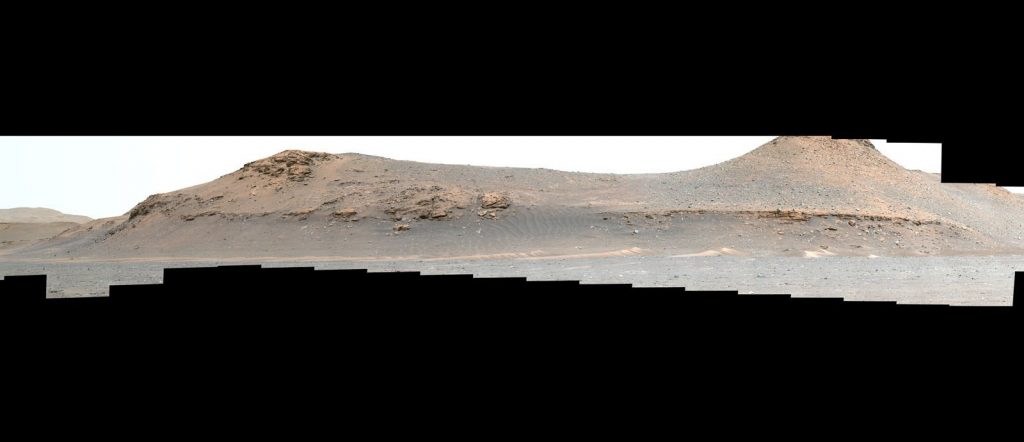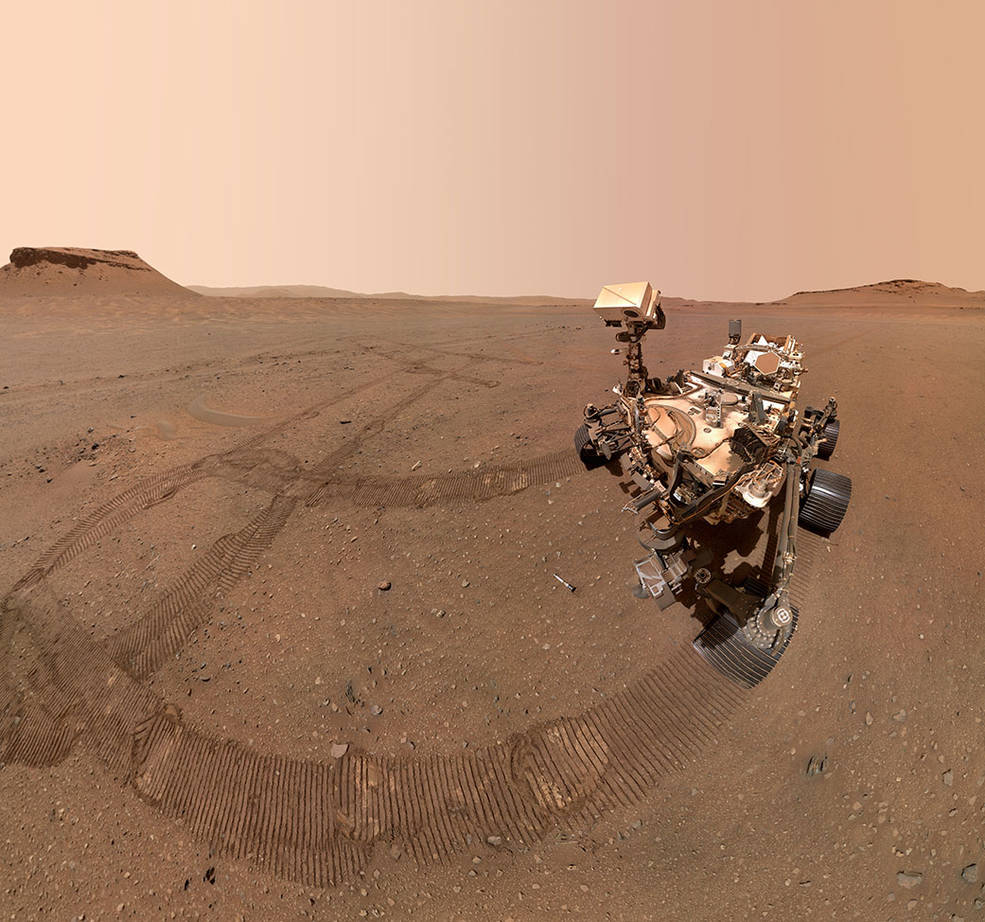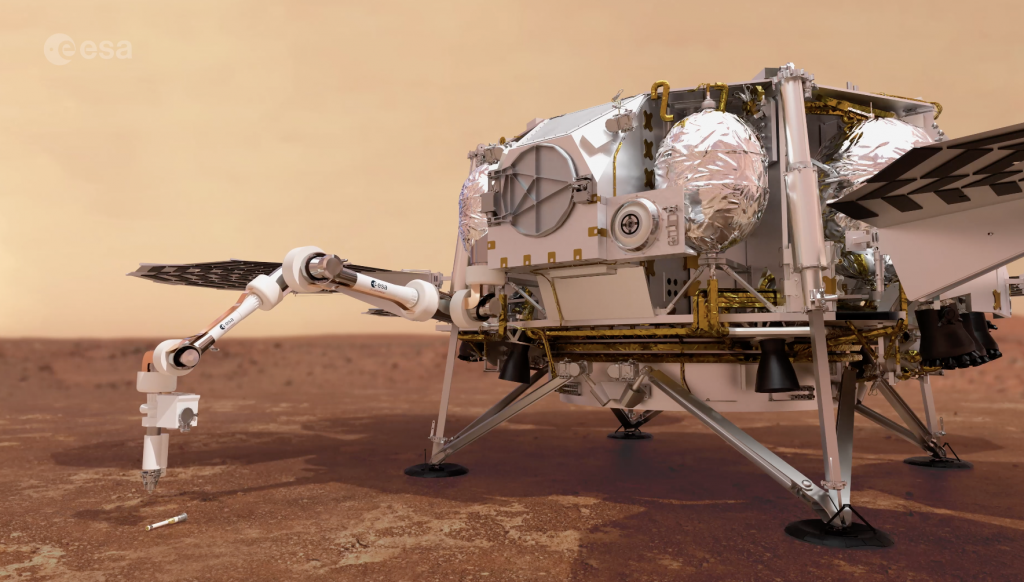Explore the fascinating landing site of NASA’s Perseverance rover in this fly-through video, featuring new views of Jezero crater and its surroundings from ESA’s Mars Express and NASA’s Mars Reconnaissance Orbiter.
The video begins by panning around Jezero crater, which can be seen in the centre background surrounded by textured and cratered terrain. The crater moves into the foreground roughly halfway through, when an outflow channel can be seen snaking away from the crater wall and towards the camera perspective. Two inflow channels (Neretva Vallis and Sava Vallis, found on the western-northwestern rim of Jezero) then become visible; the most prominent of these branches out into the crater to form an ancient fan-shaped river delta that was the landing site for Perseverance.
The Mars Express data come courtesy of the spacecraft’s High Resolution Stereo Camera (HRSC), which has been capturing full-colour, high-resolution snapshots of Mars since 2004 and has mapped over 90% of the planet’s surface. This wealth of information has been essential in the assessment and selection of safe, scientifically useful landing sites on Mars for missions to the planet – including Perseverance, a rover carried to Mars by NASA’s Mars 2020 mission.
Perseverance landed in Jezero crater in February 2021. The diverse rocks, materials, features and mineralogy found in and around Jezero crater tell the story of Mars’ complex geological history. The roughly 45-km-wide crater is found on the border between the ancient region of Terra Sabaea – which contains rocks of up to 4.1 billion years old – and the younger Isidis Planitia basin, which formed via asteroid impact.
Jezero sits next to an intriguing system of faults known as Nili Fossae and a prominent area of volcanism named Syrtis Major, where lava flowed some three billion years ago.

The wall of Jezero is breached by three valleys that were once rivers of flowing water; the crater is a so-called ‘open basin lake’ in that water once flowed both into and out of the crater, a type of basin that is especially promising in the hunt for life on Mars.
Bringing Mars to Earth
Missions such as Mars Express have made truly significant discoveries about our planetary neighbour from orbit, while lander and rover missions, like ESA’s upcoming Rosalind Franklin rover, give an up-close look at the planetary surface.
However, to dig further into the sophisticated science of Mars, we need to bring samples back to Earth and explore them in laboratories, which are prohibitively expensive, complicated and heavy to send to another planet in their entirety. Sample return missions will be more advanced than any robotic missions that have gone before and will revolutionise our understanding of both the Red Planet and the Solar System.

This video shows the very region of Mars from which we will soon return samples. ESA and NASA are developing the collaborative Mars Sample Return Campaign, on which the Perseverance rover is already hard at work. The rover is caching samples of rock, soil and atmosphere in tubes that will be collected by a follow-up mission in the 2030s.
ESA is providing a Sample Transfer Arm that will pick up the tubes and transfer them to a NASA-led rocket for launch into orbit around Mars. ESA’s Earth Return Orbiter will then ‘catch’ the samples and return them to Earth, making it the first interplanetary spacecraft to capture samples in orbit and make a return trip between Earth and Mars.

Read more about ESA’s ambitions for Mars exploration.
More information and a virtual hiking tour through Jezero crater is available from Freie Universität Berlin, whose Planetary Science and Remote Sensing working group created this video.
Creating the video
This video comprises merged data from two instruments: HRSC and CTX. The HRSC data are in the form of the camera’s Mars Chart (HMC30), which provides seamless coverage of imagery and topography across the entire region, and an accompanying digital terrain model, which provided the information needed for the images to be generated in three dimensions. Atmospheric effects – dust, clouds and haze – are added for artistic effect but are not photorealistic, with the haze starting to build up at a distance of 200 km. The CTX data comprise 33 images that have been processed using the HMC30 as a reference for colour and brightness, with a resolution of up to 5 m per pixel. Each second of the movie contains 50 frames. The vertical exaggeration is three-fold.

Discussion: no comments